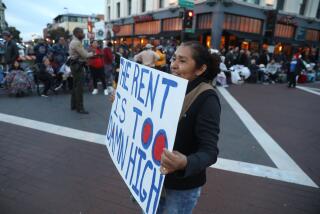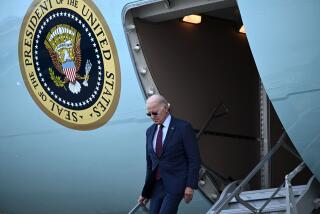Is Obama’s stimulus working?
Today’s topic: Would the economy be worse off without the Obama administration’s stimulus? Or does the fact that we’re still deep in a recession suggest that it would have been better simply to let the economy bottom out as quickly as possible?
The wrong stimulus for this overdue recession
Point: Edward E. Leamer
The Obama stimulus package has been pretty much irrelevant in the short run (this year) and will be downright harmful in the longer run, when we have to pay for it.
The second-quarter gross domestic product growth rate was increased by about 0.5% because of a favorable swing in state and local spending as a result of assistance to the states. That was a wise part of the package, but out of a total bill of $787 billion, only $62 billion was “stimulus”: $54 billion for the states and $8 billion for homes and cars, two sectors of the economy where the unemployment is concentrated. House Speaker Nancy Pelosi promised us “timely, temporary and targeted,” but except for that $62 billion, we got none of the three T’s. What we got is another big contribution from Uncle Sam to our low savings problem, offsetting the improvement in the personal savings rate, which has added about $400 billion to national savings annually. What we got was more borrowing from foreigners and a greater threat to the value of the dollar in the future and even to the dollar’s status as a reserve currency.
The recession we are experiencing is a much-needed break from many years of unsustainably high levels of building homes, cars, offices and retail stores, a much-needed reality check regarding how wealthy we are, and a long-overdue realization that our financial institutions have been taken over by gamblers. Though it’s a painful process, we will emerge in a better place with a more appropriate stock of homes, cars, retail stores and office buildings, a higher savings rate (which is essential to funding the retirements of our growing elderly population) and, if things go really well, government-guaranteed financial institutions that have been cleansed of the gamblers and the gambling.
It would have been better if our Federal Reserve had not been asleep at the switch. It should have gently applied the brakes in 2003 and 2004, when the supply of homes, cars and retail stores was growing too fast, when personal savings rates were plummeting and when our financial institutions were being taken over by gamblers. But the Fed didn’t.
A well-designed stimulus package would not prevent the needed adjustment but minimize the pain. With the typical number of new housing units built in a year at 1.5 million, we didn’t need to wait for the number to hit 500,000 to correct for overbuilding. With normal sales of autos at about 15 million to 16 million units, we didn’t need to let auto sales plummet to 9 million. Though we need to get the personal savings rate back up to 6% or more, we don’t need to do that in just a few months.
A properly designed stimulus package would have slowed the adjustment. It would have short-circuited the negative feedback from job losses by concentrating spending where the job losses were occurring. It would have made the recession not so deep but would have made the adjustment longer lasting. It could have been done, but it wasn’t even tried. Instead, we adopted a simple-minded Keynesian idea that it doesn’t matter how the money is spent and it doesn’t matter what taxes are lowered. So the Democrats got their favorite spending opportunities and the Republicans got their favorite tax cuts.
What a pity.
Edward Leamer, a UCLA economics and statistics professor, is director of the UCLA Anderson Forecast.
Keynes: right during the Great Depression, right now
Counterpoint: Brad DeLong
Back at the start of October, when it became clear that the recession was not going to be a mild “rolling readjustment” and when it began to become clear just how frozen the financial system was and how much damage it was about to do to investment and spending, economists began talking about how it would be a very good thing to pass a fiscal stimulus. Then the idea was to boost the federal deficit by about $200 billion in fiscal year 2009 (i.e., October 2009 to September 2010), $200 billion in fiscal 2010 and $100 billion in 2011 to put more people to work and cushion the rise in unemployment. The idea was to spend $500 billion in total, to be divided, say, with $125 billion in aid to states so they would not have to cut programs and throw yet more people out of work; $125 billion in tax cuts to relatively poor people feeling liquidity constrained who would spend and not save the additional cash; $125 billion to shovel-ready and near-shovel-ready infrastructure projects; and $125 billion for Congress to distribute to projects individual representatives regarded as worthy because assembling legislative coalitions to pass anything is very hard.
By the end of December, it was clear that the recession was going to be at least twice as big as the early October forecasts. Economists lamented the failure to pass a stimulus at the start of October, and upped estimates of the appropriate amount of stimulus to around $1 trillion -- with $250 billion in aid to states, $250 billion in tax cuts to people strapped for cash who would spend the money, $250 billion in infrastructure and $250 billion in projects individual members willing to join the coalition to pass the thing found worthy.
Turns out that we have (a) a recession not twice but three times as large as forecast in October, (b) a stimulus package of about $600 billion in real and semi-real stimulus, and (c) a stimulus package passed in February rather than October, four months later than it should have been.
Democratic stalwarts say that it is in part Obama’s fault. The strategy of the Obama administration -- in the stimulus, in climate change, in healthcare, in national security -- appears to be to decide what good policy is, take two giant steps toward whatever position the Republicans are setting out, extend the hand of nonpartisan technocratic governance and say “we should come to an agreement,” and then get kicked in the face because Republicans don’t have a policy but rather an attitude. They opposed everything President Clinton proposed in his first term no matter what it was and won the 1994 midterm election elections, and they hope to repeat that.
Reality-based Republicans are quiet: They know full well that had John McCain won the election in November, he would have proposed and Congress would have passed a similarly sized stimulus package (fewer spending increases, fewer tax cuts for the middle class and more tax cuts for the rich -- they are Republicans, after all). Fantasyland Republican stalwarts talk about how the stimulus package is ruining the country. And the Obama administration points out that it could not have passed anything at all without the votes of several moderate Republican senators and a few Democrats, and that the $787-billion stimulus was the biggest and most effective that those senators would ever vote for.
Thus, you are right, Ed, when you say that the stimulus was in large part a wasted opportunity. It could have been much more effective had it been better designed -- better timed, better targeted and better sized.
But you’re wrong when you hint that the stimulus was not worth doing. Mark Zandi, a former senior McCain advisor and as good an economic forecaster as you, thinks that the stimulus package boosted the rate of GDP growth by 3% in the spring and by another 4% this summer -- meaning that the $80 billion in stimulus spending in this third quarter of 2009 is boosting production and incomes by $65 billion. Because the $80 billion is being used to buy useful goods and services that in normal times have a value of about $60 billion, the stimulus package looks like a clear win: The government is losing $20 billion by being a hurried and hasty shopper, but we as a country are gaining $65 billion in incomes and production. That is a benefit-cost ratio better than 3 to 1.
And I believe, Ed, that you’re way, way wrong -- lost in the gamma quadrant with Capt. Janeway and the starship Voyager wrong -- when you say that this recession is what the economy needed. We need sectoral readjustment: to move workers out of industries such as finance, construction and real estate transactions and into (hopefully) growing industries such as healthcare and import-competing manufacturing. But we don’t need a big recession and unemployment to spike to 10%. This retards and freezes the needed rolling process of sector readjustment.
This is an old, old argument. Back in the Great Depression, Joseph Schumpeter argued that the economy was undergoing a “healthy cold douche” and that there was “a presumption against” the government lifting a finger via expansionary monetary policy or New Deals to try to keep things from getting worse. John Maynard Keynes disagreed, writing: “Some austere and puritanical souls regard [the Depression] both as an inevitable and a desirable nemesis on so much ‘overexpansion,’ as they call it. ... It would, they feel, be a victory for the mammon of unrighteousness if ... prosperity was not subsequently balanced by universal bankruptcy. We need, they say, what they politely call a ‘prolonged liquidation’ to put us right. ...
“I do not take this view. ... And I do not understand how universal bankruptcy can do any good or bring us nearer to prosperity.”
I think Keynes was a smart guy: right then, and right now.
Brad DeLong is a UC Berkeley economics professor who served in the U.S. Treasury Department during the Clinton administration. His blog is “Grasping Reality with Both Hands.”
More to Read
A cure for the common opinion
Get thought-provoking perspectives with our weekly newsletter.
You may occasionally receive promotional content from the Los Angeles Times.






